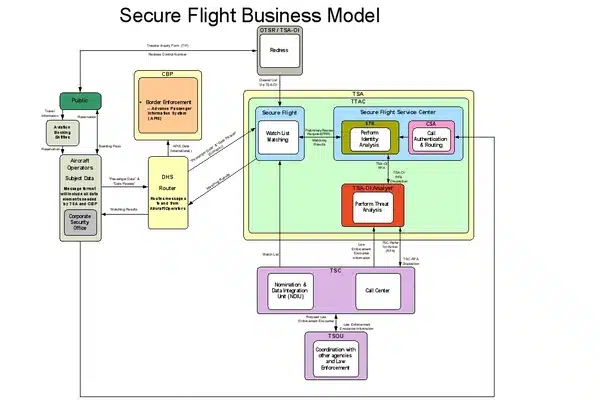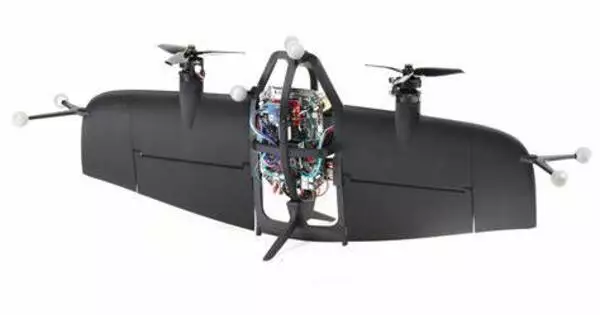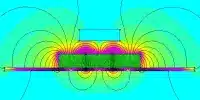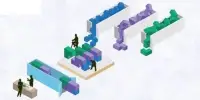High-performance flight planning algorithms are critical for a variety of aviation applications, such as commercial aviation, military operations, and unmanned aerial vehicles (UAVs). New algorithms for fixed-wing ‘tailsitter’ aircraft trajectory planning and control are faster and more efficient than typical quadcopter drones. The algorithms are capable of performing difficult maneuvers and are so efficient that they can plan complex trajectories in real-time.
A tailsitter is a fixed-wing aircraft that takes off and lands vertically (sitting on the landing pad on its tail) before tilting horizontally for forward flight. These flexible aircraft, which are faster and more efficient than quadcopter drones, can fly over a vast area like an airplane but also hover like a helicopter, making them well-suited for duties like search-and-rescue or parcel delivery.
MIT researchers have created new algorithms for tailsitter trajectory planning and control that take advantage of the aircraft’s mobility and adaptability. Their algorithms can do difficult maneuvers such as sideways or upside-down flights and are computationally efficient enough to plan complex routes in real-time.
Other methods often either reduce the system dynamics in their trajectory planning algorithm or utilize two separate models, one for helicopter mode and one for airplane mode. Neither approach can plan or execute as aggressive trajectories as the MIT team demonstrated.
We wanted to really exploit all the power the system has. These aircraft, even if they are very small, are quite powerful and capable of exciting acrobatic maneuvers. With our approach, using one model, we can cover the entire flight envelope – all the conditions in which the vehicle can fly.
Ezra Tal
“We wanted to really exploit all the power the system has. These aircraft, even if they are very small, are quite powerful and capable of exciting acrobatic maneuvers. With our approach, using one model, we can cover the entire flight envelope – all the conditions in which the vehicle can fly,” says Ezra Tal, a research scientist in the Laboratory for Information and Decision Systems (LIDS) and lead author of a new paper describing the work.
Tal and his colleagues used their trajectory generation and control algorithms to show tailsitters performing complex maneuvers such as loops, rolls, and climbing turns, as well as a drone race in which three tailsitters sped through aerial gates and performed several synchronized, acrobatic maneuvers.
These algorithms could theoretically allow tail sitters to conduct sophisticated moves autonomously in unpredictable conditions, such as flying into a collapsed building and avoiding obstacles while searching for survivors.
Gilhyun Ryou, a graduate student in the Department of Electrical Engineering and Computer Science (EECS), and Sertac Karaman, associate professor of aeronautics and astronautics and head of LIDS, also contributed to the work. The study was published in IEEE Transactions on Robotics.

Tackling tailsitter trajectories
The design for a tailsitter was invented by Nikolai Tesla in 1928, but no one tried to seriously build one until nearly 20 years after his patent was filed. Even today, due to the complexity of tailsitter motion, research, and commercial applications have tended to focus on aircraft that are easier to control, like quadcopter drones.
Trajectory generation and control algorithms that do exist for tailsitters mostly focus on calm trajectories and slow transitions, rather than the rapid and acrobatic maneuvers these aircraft are capable of making.
With such challenging flight conditions, Tal and his collaborators knew they would need to design trajectory planning and control algorithms specifically for agile trajectories with fast-changing accelerations in order to enable these unique aircraft to reach peak performance.
To do that, they used a global dynamics model, meaning one that applies to all flight conditions, ranging from vertical take-off to forward, or even sideways, flight. Next, they leveraged a technical property known as differential flatness to ensure that the model would perform efficiently.
In trajectory generation, a key step is to ensure the aircraft can actually fly the planned trajectory — maybe it has a minimum turning radius that makes a particularly sharp corner infeasible. Since tailsitters are complex systems, with flaps and rotors, and exhibit such complicated aerial motions, it typically takes numerous calculations to determine if a trajectory is feasible, which hampers traditional planning algorithms.
The MIT researchers can use differential flatness to quickly determine whether a trajectory is viable by using a mathematical function. Their method eliminates many of the intricate system dynamics and plans the tailsitter’s course as a mathematical arc over space. The algorithm then checks the feasibility of that trajectory using differential flatness.
“Because that check is computationally very cheap, you can actually plan trajectories in real-time with our algorithm,” Tal explains.
Because the researchers constructed their algorithm in such a way that it consistently evaluates all of these varied flying situations, these trajectories can be quite complex, rapidly switching between vertical and horizontal flight while integrating sideways and inverted moves.
“Many research teams focused on the quadcopter aircraft, which is very common configuration for almost all consumer drones. The tailsitters, on the other hand, are a lot more efficient in forward flight. I think they were not used as much because they are much harder to pilot,” Karaman says. “But, the kind of autonomy technology we developed suddenly makes them available in many applications, from consumer technology to large-scale industrial inspections.”
A tailsitter airshow
They put their strategy to the test by designing and flying a series of difficult paths for tail sitters in MIT’s indoor flight area. In one demonstration, they show a tailsitter doing an ascending maneuver in which the aircraft rotates to the left before swiftly accelerating and banking back to the right.
They also displayed a tailsitter “airshow” in which three synchronized tailsitters executed loops, abrupt twists, and effortlessly soared through airborne gates. These moves would be impossible to plan in real-time without the inclusion of differential flatness in their model, according to Tal.
“Differential flatness was invented and used to generate smooth trajectories for basic mechanical systems like a motorized pendulum.” We’ve now adapted it to fixed-wing aircraft, more than 30 years later. There might be many other applications we could apply this to in the future,” Ryou adds.















